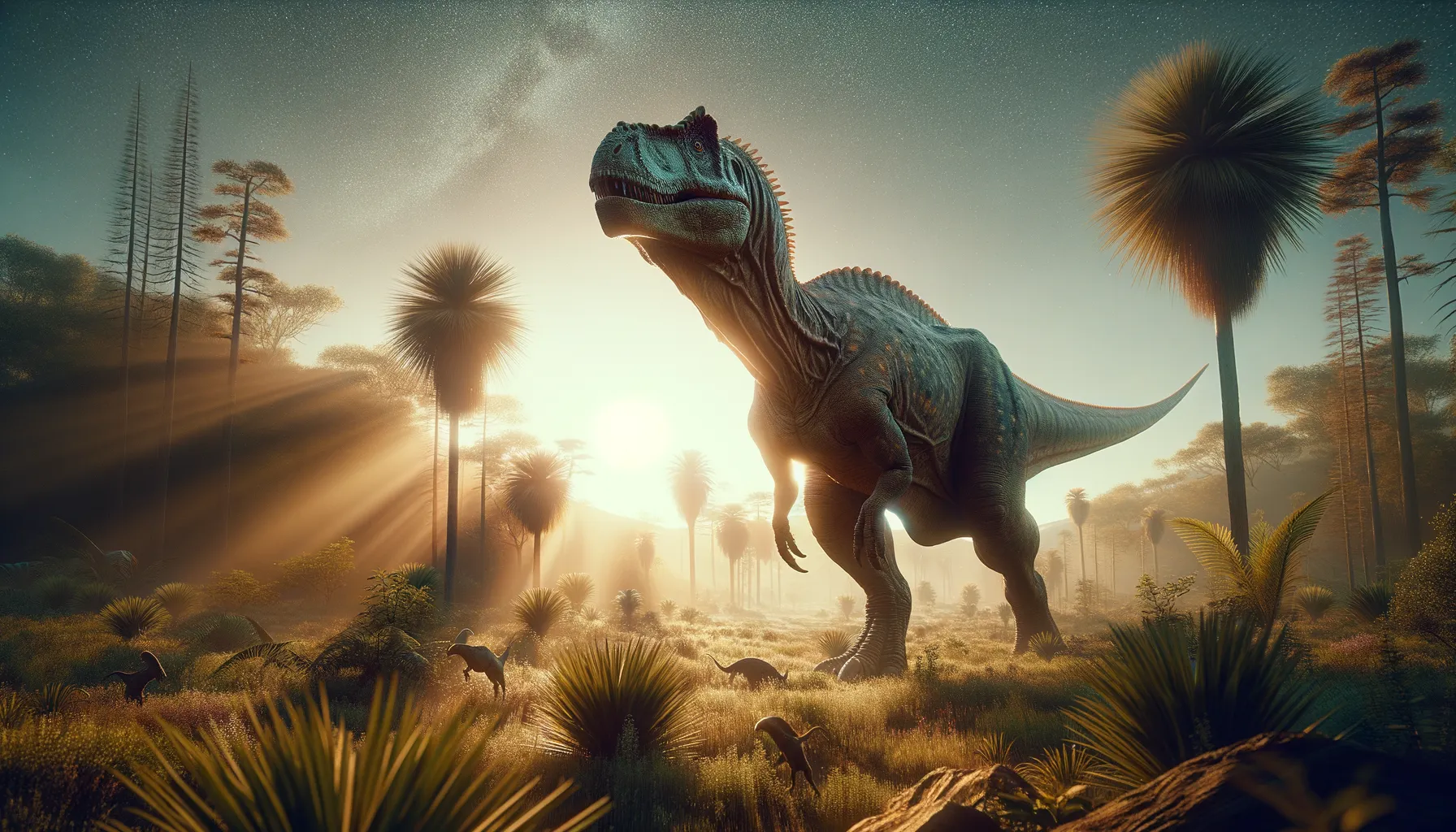
Proplanicoxa
Graceful giant of the ancient world.
Period
triassic
Length
Roughly 8 meters long.
Height
Around 2.5 meters at the hip.
Weight
Approximately 1,500 to 2,000 kg.
Proplanicoxa was an herbivorous dinosaur known from the Cretaceous period. It belonged to the iguanodont family and was recognized for its relatively large body and robust, bipedal stance. Its fossils offer insights into the diversity and adaptation of herbivorous dinosaurs during its era. Proplanicoxa lived in what is now Europe, and its skeletal structures hint at its capability to browse for food at varying heights.
Diet
Proplanicoxa was primarily herbivorous, feeding on a variety of plants. Its robust jaws allowed it to chew tough vegetation effectively, while its tall stance helped it reach higher foliage.
Hunting
As a herbivore, Proplanicoxa did not hunt other animals. It likely foraged alone or in small groups to find enough food to sustain its large body.
Environmental challenges
During the Cretaceous period, climatic changes and the shifting landscapes would have posed significant challenges. The availability of food in different seasons might have required adaptability in its diet. Competition for resources with other herbivores was possibly a concern, influencing its movement patterns.
Speed
Moderately fast for a herbivore of its size.
Lifespan
Estimated to be around 20 to 30 years.
First discovery
First discovered in the early 1990s in England.
Fun Facts
- Proplanicoxa was a herbivorous dinosaur that lived during the Early Cretaceous period, around 125 million years ago.
- This dinosaur was discovered in what is now England, making it a part of the rich fossil heritage found in the UK.
- Proplanicoxa belonged to a group of dinosaurs called iguanodontians, known for their beak-like mouths ideal for chewing plants.
- It was a medium-sized dinosaur that could grow up to about 8 meters in length, roughly the length of a city bus.
- The name 'Proplanicoxa' means 'before flat hips', reflecting its classification and anatomical features.
- Proplanicoxa had strong hind limbs, which suggests it was likely a capable walker and could potentially run when necessary.
- Its fossils were first described in the early 2000s, which makes it a relatively recent discovery in the world of paleontology.
Growth and Development
Proplanicoxa likely experienced steady growth throughout its life, reaching maturity at around 10 years. Juveniles might have shown different proportions than adults to adapt to their changing environment. The development of its large thumb spikes, possibly for defense, suggests a need for protection from predation early in life.
Habitat
It inhabited lush, vegetative areas with access to plentiful food sources, such as forests and floodplains. This environment provided ample cover from predators and supported its herbivorous diet. The presence of water sources was critical for sustaining its large body size.
Interaction with other species
Proplanicoxa probably lived alongside various other dinosaurs, including potential predators like theropods. It may have traveled in herds for additional protection. Its interactions with smaller herbivores could have included competing for food or coexisting without direct competition.
Natural lifespan
In ideal conditions, it could live up to three decades.
Reproduction
Proplanicoxa is thought to have laid eggs, like many dinosaurs of its time. It potentially built nests in secluded areas to protect the young from predators. Parental care might have been minimal, with hatchlings growing quickly to fend for themselves.
Social behaviour
This dinosaur may have exhibited some herding behavior as a strategy against predators. Social interactions among these herbivores could have been relatively simple, focused on movement and feeding. During breeding seasons, its behavior might have included displays or sounds to attract mates.
Fossil locations
Fossil remains of Proplanicoxa have primarily been found in the United Kingdom. These discoveries help paleontologists understand the diversity of iguanodonts in prehistoric Europe. Ongoing excavations in these regions could reveal more about its way of life.
